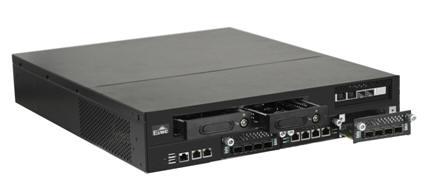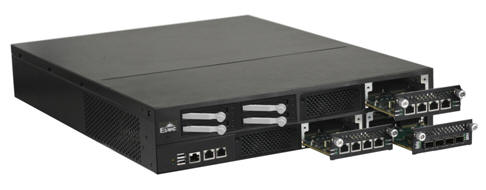First, system overview
Load balancing (also known as load sharing), the English name is Load Balance, which means to balance the load (work tasks) to multiple operating units to perform the tasks together. The load balancing device is not a basic network device but a performance optimization device. For network applications, load balancing is not required at the outset. When the traffic of network applications continues to increase and a single processing unit cannot meet the load requirements, load balancing will play a role when the network application traffic is subject to bottlenecks. Through load balancing devices, new and old networks and service systems can be integrated, links and server loads can be properly shared, and hardware devices can be replaced frequently. This effectively reduces system operation and maintenance costs and improves service operation efficiency.
Second, the system requirements
Load balancing devices generally have two types of server load balancing and link load balancing. One of the best server load balancing devices needs to support multi-LAN access, clientless deployment, online expansion, high availability of nodes, fine-grained dual Active: redundant links, fading out of services and nodes, multi-port protocol mode Such functions as link load balancing need to support bypass and direct connection of two topological modes, automatic link health monitoring, intelligent matching links, network card MART fault tolerance technology, power supply MART fault tolerance technology, port expansion and other functions. The equipment needs to work in the equipment room for a long time without any trouble and is easy to manage remotely.
Third, the system description
The load balancing device is a combination of a load balancing software system and a hardware platform. The high-performance network application platform product of EVOC is used as a hardware platform in a load balancing device to provide high-speed, stable, and reliable operation support for the device.
Fourth, the system block diagram

NPC-8210
2U modular network application platform with Intel® C604 chip supporting up to 40 Gigabit Ethernet ports
ïµ Supports 2 Intel® Xeon® processor E5-2600 series CPUs
最大 Supports up to 384GB DDR3 memory
ïµ Provides 2 Gigabit electrical ports, expands up to 40 Gigabit Ethernet ports through 5 PCIE network expansion slots
最大 Supports 8 Bypasses and External Bypass Control Switch
ïµ Supports four 2.5-inch pull-out hard disks or two 3.5-inch pull-out hard disks, supporting RAID 0/1/5/10
ïµ Provides 3 PCIE 8X standard slots
外 External Bypass Control Switch


NPC-8210-02
ç ” The EVOC network platform is manufactured using industrial-grade standards to meet carrier-grade reliability requirements
é…套 Supporting network module has lightning protection design with excellent electromagnetic compatibility
ïµ Products provide external Bypass function switch for easy maintenance
机箱 The front panel of the chassis is made of aluminum alloy with a neutral design for quick customization.
机箱 VGA interface can be easily broken out for easy debugging
ïµ Two screws open the chassis for easy maintenance
The high-performance network application platform of EVOC adopts industrial-grade standard manufacturing, meets the requirements of carrier-class reliability, and focuses on humanized product design. It can meet the hardware platform requirements of various high-end network devices and enhance the application value of the device.
The silicone heat shrinkable tube has excellent thermal and electrical insulation properties, making it ideal for applications where temperature resistance and electrical insulation are required. It can withstand high temperatures ranging from -60°C to 200°C, making it suitable for use in harsh environments.
The tube is designed to shrink when heated, providing a tight and secure fit around the objects it is applied to. This shrinkage creates a protective barrier that insulates against moisture, chemicals, and other environmental factors. It also helps to prevent abrasion and physical damage to the objects it covers.
Silicone heat shrinkable tube is commonly used in electrical and electronic applications, such as insulating wires, cables, and connectors. It is also used in automotive, aerospace, and industrial applications for protecting and sealing components.
Overall, silicone heat shrinkable tube is a versatile and reliable solution for insulation and protection needs in various industries. Its high temperature resistance, electrical insulation properties, and shrinkability make it an excellent choice for a wide range of applications.
Silicone Heat Shrinkable Tube,Heat Shrinkable Tube,Heat Shrinkable Protective Tube,Waterproof Heat Shrink Tubing
Dongguan Liansi Electronics Co.,Ltd , https://www.liansisleeve.com